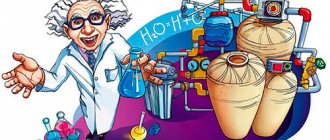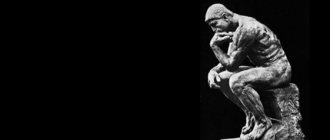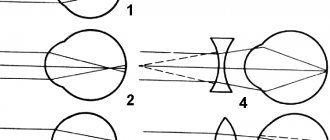Updated July 23, 2021 206 Author: Dmitry Petrov
Hello, dear readers of the KtoNaNovenkogo.ru blog. People who are fond of reading scientific literature often come across this word.
A student who has skipped almost all his philosophy lectures comes to class, hears the professor talking about the empiricists, and becomes despondent.
In vain - this concept, with all its external complexity, in fact, even a child can understand.
Empirical and empiricism are...
The term empiricism comes from the Greek word empeiría, which translates as " experience ".
Empirical is what is revealed to us in the senses, coming from the outside, given directly, obtained experimentally.
Empiricism is a philosophical movement that originated in the 16th century. It was during this period that scientific thinking began to supplant the religious view of the structure of the world.
The founder of empiricism is the English philosopher Francis Bacon. In his opinion, science should have an exclusively practical vector of application, and its main goal is the subjugation of nature by man.
The most radical supporters of empiricism proposed to reject useless theorizing and recognize that observation is the only source of true knowledge.
Empiricism is divided into two directions:
- Materialistic . There is a reality around us that exists on its own, regardless of our consciousness. We comprehend this world with the help of our senses and draw experience from it. This sensory experience is the main source of true knowledge.
- Idealistic . The basis of experience is the totality of our sensations and ideas. Reality exists only within our consciousness, and outside of it there is nothing.
Empirical basis of the study: examples
You can read the characteristics of the empirical base for a long time and still not figure out what it really is. Therefore, we have collected real examples of descriptions that can be found in coursework, diplomas and dissertations. Study the samples and use them as a template for your research.
Examples of describing the empirical basis of research in coursework
Coursework in Sociology
Topic: “Russian women politicians in social media: analysis of network accounts”
Empirical basis of the study: The empirical basis of the study consisted of the results of an analysis of the accounts of Russian women politicians on the social networks Twitter, Facebook, Vkontakte, Livejournal, Instagram, Odnoklassniki and YouTube. The observation was carried out from January 1, 2021 to April 8, 2021. Studying this period is enough to see how politicians commented on holidays, important events in Russia (for example, rallies on May 26 or the terrorist attack in St. Petersburg) and makes it possible to study publications over a fairly long period of time.
Accounts were selected according to the following principle:
Posts on pages must be published at least once a week, otherwise the account will be considered abandoned.
The sample includes accounts of politicians of different ranks:
- the highest echelon of power - ministers;
- deputies, press secretaries;
- local politicians.
For each group, 2-3 most popular representatives were selected. The degree of their fame and popularity is assessed using statistics of their citations in the media. It also took into account how popular their accounts were (how many followers they had).
Coursework in psychology
Topic: “Psychological analysis of the features of the formation of artificial bilingualism in autistic children”
Empirical basis of the study: The study involved two groups of children (experimental and control), numbering 15 subjects, aged 10-11 years, living in Moscow and the Moscow region, with a diagnosed autism spectrum disorder, not burdened by mental retardation.
Examples of describing the empirical basis of research in dissertations
Thesis on financial law
Topic: “Features of legal regulation of the activities of foreign legal entities on the Russian securities market”
Empirical base of the study: The factual basis of the work was statistical information from the State Statistics Committee of Russia, the Ministry of Finance of Russia, the Federal Financial Markets Service of Russia, the Bank of Russia, official materials of the Ministry of Taxes of Russia, as well as other official sources.
Graduate work in medicine
Topic: “Professional ontogenesis: medical-sociological and psychological-ethical problems of medical practice”
Empirical basis of the study: The research was conducted on the basis of the Volgograd State Medical University through a survey. The study involved junior and senior students of the medical and pediatric faculties, as well as doctors from medical institutions and the Sanitary and Epidemiological Surveillance Center of Volgograd and Volzhsky.
Empirical and theoretical levels of scientific knowledge
The empirical level of scientific knowledge is a sensory study of really existing objects and phenomena. The main task of a scientist at the empirical level is to record and group scientific facts.
A scientific fact is a statement that has been tested, confirmed and described according to certain requirements.
The following processes occur at this level :
- Collection and accumulation of empirical data about the object of study.
- Identifying valuable information that can be classified as scientific facts.
- Definition, measurement of physical quantities of the object under study.
- Comparing objects with each other to identify patterns and relationships.
Next comes the theoretical level of cognition , where mental processing of empirically obtained information occurs.
Types of description
There are only two of them:
- High quality.
- Quantitative.
Qualitative description is an empirical method that does not use numbers to clarify data. As an example, the following definition can be given: an apple is green. Quantitative description involves carrying out activities using the language of mathematics. It is also assumed that various measurement procedures will be carried out. In a narrow sense, a quantitative description implies only recording the data obtained. With more careful work, empirical dependencies between the results obtained are also discovered.
Observation as the basis of empiricism
A method that consists of targeted perception, recording the behavior and properties of the subject of research. This is not just thoughtful contemplation or a pleasant pastime.
Here is a grandmother sitting on a bench at the entrance, remembering everyone who comes in and out. From a scientific point of view, she is not an observer. There are strict requirements for this process:
- Focus and selectivity . The researcher carries out observations not at all out of boredom, but to achieve a specific goal - testing or refuting a hypothesis, collecting information. If our grandmother selectively counts how many mustachioed men enter the entrance, then the requirement will be met.
- Recording the results of observation . You need to keep an observation log and write down everything you find out.
- Systematicity . Data must be organized and recorded in a specific language - formal or natural. Here the grandmother researcher takes a thick notebook and writes: “January 10, 2019, 09:15 - a man of average build passed by, his mustache is 5 centimeters long.”
Observation includes:
- object – what we are looking at;
- subject – the researcher himself;
- technical means - with what we look (eyes, binoculars, telescope).
Observation can be direct or indirect . With direct observation, we study the object itself, and with indirect observation, we study the effects of its existence.
Some objects cannot be explored because they are too small or too far away. For example, elementary particles cannot be seen even with a powerful microscope. But when they move, they leave traces that can be recorded.
There are also two methods of observation - direct and instrumental . Direct observation is carried out using the senses - eyes, ears, hands, and instrumental observation - using technical means - telescopes, sensors, microscopes.
If you want to learn more about experiential knowledge, watch this video:
Scientific observation
This does not mean simple passive contemplation of the world. Scientific observation is a special type of activity that involves the presence of a knowledgeable person, usually a scientist, an object and means. The latter include devices and material media for transmitting information. An important feature of scientific observation is the purposeful nature of its implementation. This is due to the fact that there are preliminary ideas and hypotheses that form the final task. This is an important difference from ordinary contemplation. Observation and empirical description are closely related areas that ultimately consolidate and convey results through symbolic means. Then further processing is carried out, which includes classification, systematization and generalization.
Measurement is another empirical level of knowledge
This is an empirical research method that allows you to find out the exact quantitative characteristics of the object being studied.
There is a globe, it is huge. “Huge” is a qualitative characteristic that does not provide any useful information. But “the diameter of the globe is 12.7 thousand kilometers” is a quantitative parameter that is important for science.
To carry out the measurement we will need :
- magnitude - what we will measure;
- the subject is the researcher himself with a ruler in his hands;
- methodology - scale and technical means that we will use.
Measurements can be direct or indirect . With direct measurements, the result is determined directly - apply a compass and find out the radius. With indirect measurements, the result is obtained by calculating the desired value.
To find out the area of a square, measure any side of it with a ruler and multiply this value by itself.
Distinctive features of empirical methods in pedagogy
If we are talking about a specific science, in this case pedagogy, then there are more types of empirical methods here than in others.
Of course, the main ones are repeated, however, they have a number of distinctive features, which will be discussed below.
The object of observation in pedagogy can be both a group and one of its representatives
The first type of empirical method is observation.
Due to the fact that our objects are people, the researcher will be able to observe them in two different ways: being included in the group or not being included.
In addition, he can do this openly or secretly, choose as an object one representative of the group or all its members.
Experiment is empirical knowledge of the highest form
This is a research method in which there is a controlled, targeted influence on the subject being studied . Experimentation arises from an unwillingness to wait.
A scientist wants to know what will happen if one throws one stone onto another from a great height. He would have to spend years waiting for the right event to occur. A true scientist will not waste time. He will rise to a hill and throw the stone down. This will be an experiment.
An experiment is considered reliable if, when repeated many times, it gives the same results.
So we tossed a coin and it came up heads. If you limit yourself to one single experiment, you can draw the wrong conclusion - the coin always lands heads up. But after conducting hundreds of such experiments, we will come to the correct conclusion: the distribution between heads and tails corresponds to probability theory - 50/50.
An experiment is a powerful, fast, effective empirical method of knowledge. It is characterized by a lack of pity for the object of research, which in the process can be changed beyond recognition or even destroyed .
In this regard, observation is a more passive and humane way of research.
Experiments are classified according to the objects being studied: chemical, physical, social, economic. But they can also be divided according to goals and objectives:
- research – to form new hypotheses, make guesses;
- testing – to confirm or refute existing hypotheses and theories;
- decisive - from two contradictory theories, based on the results of the experiment, the only correct one is selected.
Peculiarities
Everything is clarified by looking at the meaning of the word. The empirical approach puts experimentation at the forefront. Anything can come to a person's mind. Blue elephants? Flying spoons? The ability to walk on water? Only experience will tell how true the models built by people are. Experience can lead to new hypotheses.
Theoretical research methods are almost entirely in the field of abstractions, operating with imaginary structures. There is a withdrawal in mental activity from specific facts, the construction of models and their analysis.
Empiricism in philosophy arose quite a long time ago; something similar to it is found in the statements of ancient Greek philosophers about the absence of a priori knowledge (not deducible from experience), but still these are only prerequisites. Empiricism is formed as a separate movement in the works of Bacon, who, in essence, created the scientific method of cognition.
Bacon proposed the method of scientific induction, a stepwise ascent to knowledge. Its essence was that, based on experience, we assume something more, that is, we rise one step higher, and then we must go down and check our assumption. If everything is good and the hypothesis is confirmed, we can continue and expand our assumption even further.
We recommend: Deduction and the deductive method are
If empiricism is based on induction - private knowledge, then there are no laws? To some extent, this is empirical thinking, which does not accept the possibility of complete knowledge, since experiences are isolated.
Operating with knowledge becomes probabilistic. One thing may be true today, but something else may be true tomorrow.
Description is a recording of the results of an experiment or observation.
The description is carried out using natural language - such as this article is written in - or a formalized artificial language. In this case, graphs, diagrams, images, tables, diagrams are used.
The problem with this method is its subjectivity. The same object can be described in completely different ways.
Let's take an ordinary cat. A cat lover will talk about him in bright colors, admiring his color, character, and habits. But for an allergy sufferer, the description of the same animal will be different - a real fiend of hell.
To avoid ambiguity and inaccuracy, use the following techniques :
- standardization (what is this?) of the structure of presentation of the material;
- definition of the terms used and their meanings;
- setting criteria for applying certain assessments;
- transition from natural language to formalized form;
- comparison of information from different sources.
Description is a method that is closely related to other methods of empirical research. You can’t say that he is somehow better or worse than others. All together is a single cycle.
The results obtained during observation or experiment need to be recorded and correctly presented. Then it's time for description.
Soul and experiment
Empiricism also greatly influenced psychology. Moreover, the title of Wolf’s book “Empirical Psychology” served as an impetus for the widespread use of the term “psychology” in European science. However, this was 1732, Wolf proposed studying the actual manifestations of the soul, and not detached questions about its existence, but there were still very few experiments at that time. He was a follower of Leibniz and established parallels between the psyche and physical events.
Almost 150 years later, in 1879, Wundt created experimental psychology by opening the first laboratory. Psychology for him is the science of direct experience. The experiments of this great man begin a thorny but most interesting path to the study of the psyche. Laboratories, recording observations, experiments, studying sensations, perceptions, attention, feelings, etc. - all this remains important today, although the methods of conducting tests and experiments have changed.
Recommended: What is experience?
A little later, psychoanalysis appears, which Popper criticized for its unfalsifiability. An important condition, which has already been mentioned, for the recognition of a theory - falsifiability - is apparently impossible to fulfill in psychoanalysis.
Many other approaches were born in the Old and New Worlds. Gestalt psychologists conducted experiments on attention, memory and perception, and studied insights. Pavlov discovered the principles of unconditioned and conditioned reflexes, and behaviorists used them to justify the principles of learning.
Psychology successfully implements the principles of the empirical method and is not going to abandon them, although at the time of its inception it often retreated into mysticism and ephemerality. Now this is a serious science, which, armed with neurobiology, the latest equipment for studying the brain and programs for analyzing observations obtained during the experiment, is gaining authority among the exact and natural sciences. Author: Ekaterina Volkova
§ 5. GENERAL SCIENTIFIC METHODS AND RESEARCH TECHNIQUES
In the structure of general scientific methods and techniques, three levels are most often distinguished:
¦ methods of empirical research; ¦ methods of theoretical knowledge; ¦ general logical methods and techniques of research.
Let us briefly consider the essence of these methods, techniques and operations.
I. Methods of empirical research.
1. Observation is a purposeful passive study of objects, relying mainly on data from the senses. In the course of observation, we gain knowledge not only about the external aspects of the object of knowledge, but also - as the ultimate goal - about its essential properties and relationships.
Observation can be direct or indirect through various instruments and other technical devices. As science develops, it becomes more complex and indirect. Basic requirements for scientific observation: unambiguous design (what exactly is being observed); the possibility of control through either repeated observation or using other methods (for example, experiment). An important point in observation is the interpretation of its results - deciphering instrument readings, etc.
2. Experiment - active and purposeful intervention in the course of the process being studied, a corresponding change in the object under study or its reproduction in specially created and controlled conditions determined by the goals of the experiment. During its course, the object being studied is isolated from the influence of secondary circumstances that obscure its essence and is presented in its “pure form.”
The main features of the experiment: a) a more active (than during observation) attitude towards the object of study, up to its change and transformation; b) the ability to control the behavior of an object and check the results; c) repeated reproducibility of the studied object at the request of the researcher; d) the ability to detect properties of phenomena that are not observed in natural conditions.
The types (types) of experiments are very diverse. Thus, according to their functions, they distinguish research (search), testing (control), and reproducing experiments. Based on the nature of objects, they are distinguished between physical, chemical, biological, social, etc. There are qualitative and quantitative experiments. A thought experiment—a system of mental procedures carried out on idealized objects—has become widespread in modern science.
3. Comparison is a cognitive operation that reveals the similarity or difference of objects (or stages of development of the same object), i.e. their identity and differences. It makes sense only in the aggregate of homogeneous objects that form a class. Comparison of objects in a class is carried out according to characteristics that are essential for this consideration. Moreover, objects that are compared on one basis may be incomparable on another.
Comparison is the basis of such a logical technique as analogy (see below), and serves as the starting point of the comparative-historical method. Its essence is the identification of the general and special in the knowledge of various stages (periods, phases) of development of the same phenomenon or different coexisting phenomena.
4. Description is a cognitive operation consisting of recording the results of an experiment (observation or experiment) using certain notation systems accepted in science.
5. Measurement is a set of actions performed using certain means in order to find the numerical value of the measured quantity in accepted units of measurement.
It should be emphasized that empirical research methods are never implemented “blindly”, but are always “theoretically loaded” and guided by certain conceptual ideas.
II. Methods of theoretical knowledge.
1. Formalization - display of content knowledge in a sign-symbolic form (formalized language). The latter is created to accurately express thoughts in order to eliminate the possibility of ambiguous understanding. When formalizing, reasoning about objects is transferred to the plane of operating with signs (formulas), which is associated with the construction of artificial languages (the language of mathematics, logic, chemistry, etc.).
It is the use of special symbols that makes it possible to eliminate the ambiguity of words in ordinary, natural language. In formalized reasoning, each symbol is strictly unambiguous. Formalization serves as the basis for the processes of algorithmization and programming of computing devices, and thereby the computerization of not only scientific and technical, but also other forms of knowledge.
The main thing in the formalization process is that operations can be performed on the formulas of artificial languages, and new formulas and relationships can be obtained from them. Thus, operations with thoughts about objects are replaced by actions with signs and symbols. Formalization, therefore, is a generalization of the forms of processes that differ in content, and the abstraction of these forms from their content. It clarifies the content by identifying its form and can be carried out with varying degrees of completeness. But, as the Austrian logician and mathematician of the 20th century showed. K. Gödel, in a substantive theory there always remains an undetected, unformalizable remainder. The ever-deepening formalization of the content of knowledge never reaches absolute completeness, because the development (change) of the subject of knowledge and knowledge about it never stops. This means that formalization is internally limited in its capabilities. It has been proven that there is no universal method that allows any reasoning to be replaced by calculation (“let’s count!” Leibniz dreamed). Gödel's theorems provided a fairly rigorous justification for the fundamental impossibility of complete formalization of scientific reasoning and scientific knowledge in general.
2. The axiomatic method is a method of constructing a scientific theory, in which it is based on certain initial provisions - axioms (postulates), from which all other statements of this theory are deduced from them in a purely logical way, through proof. To derive theorems from axioms (and in general some formulas from others), special rules of inference are formulated. Consequently, a proof in the axiomatic method is a certain sequence of formulas, each of which is either an axiom or is obtained from previous formulas according to some rule of inference.
The axiomatic method is only one of the methods for constructing already acquired scientific knowledge. It has limited application because it requires a high level of development of an axiomatized substantive theory. The famous French physicist Louis de Broglie drew attention to the fact that “the axiomatic method may be a good method of classification or teaching, but it is not a method of discovery” [1].
1 Broglie L. de. Along the paths of science. - M., 1962. P. 179.
3. The hypothetico-deductive method is a method of scientific knowledge, the essence of which is to create a system of deductively interconnected hypotheses, from which statements about empirical facts are ultimately derived. Thus, this method is based on the derivation (deduction) of conclusions from hypotheses and other premises, the truth value of which is unknown. This means that the conclusion obtained on the basis of this method will inevitably be probabilistic in nature.
General structure of the hypothetico-deductive method:
a) familiarization with factual material that requires a theoretical explanation and an attempt to do so with the help of already existing theories and laws. If not, then:
b) putting forward conjectures (hypotheses, assumptions) about the causes and patterns of these phenomena using a variety of logical techniques;
c) assessing the validity and seriousness of assumptions and selecting the most probable from among many of them;
d) deducing consequences from a hypothesis (usually deductively) with clarification of its content;
e) experimental verification of the consequences derived from the hypothesis. Here the hypothesis either receives experimental confirmation or is refuted. However, confirmation of individual consequences does not guarantee its truth (or falsity) as a whole. The best hypothesis based on the test results becomes a theory.
A mathematical hypothesis can be considered a type of hypothetico-deductive method, where some equations that provide a modification of previously known and tested states act as hypotheses. By changing the latter, they create a new equation expressing a hypothesis that relates to new phenomena. The hypothetico-deductive method (like the axiomatic one) is not so much a method of discovery as a way of constructing and justifying scientific knowledge, since it shows exactly how one can arrive at a new hypothesis.
4. Ascent from the abstract to the concrete - a method of theoretical research and presentation, consisting in the movement of scientific thought from the initial abstraction ("beginning" - one-sided, incomplete knowledge) through successive stages of deepening and expanding knowledge to the result - a holistic reproduction in theory of the subject under study. As its premise, this method includes an ascent from the sensory-concrete to the abstract, to the isolation in thinking of individual aspects of an object and their “fixation” in the corresponding abstract definitions. The movement of knowledge from the sensory-concrete to the abstract is the movement from the individual to the general; logical techniques such as analysis and induction predominate here. The ascent from the abstract to the mentally-concrete is the process of movement from individual general abstractions to their unity, the concrete-universal; the methods of synthesis and deduction dominate here. Such a movement of cognition is not some kind of formal, technical procedure, but a dialectically contradictory movement, reflecting the contradictory development of the subject itself, its transition from one level to another in accordance with the development of its internal contradictions [1].
1 For more information about this method, see: Ilyenkov E.V. Dialectics of abstract and candy in scientific and theoretical thinking. M., 1997.
III. General scientific methods and techniques of research.
1. Analysis - the real or mental division of an object into its component parts and synthesis - their unification into a single organic whole, and not into a mechanical unit. The result of the synthesis is a completely new formation.
When applying these research techniques, it should be borne in mind that, firstly, the analysis should not overlook the quality of the objects. Each area of knowledge has its own limit of division of an object, beyond which we move into another world of properties and patterns (atom, molecule, etc.). Secondly, a type of analysis is also the division of classes (sets) of objects into subclasses - their classification and periodization. Thirdly, analysis and synthesis are dialectically interconnected. But some types of scientific activity are primarily analytical (for example, analytical chemistry) or synthetic (for example, synergetics).
2. Abstraction is the process of mental abstraction from a number of properties and relationships of the phenomenon being studied with the simultaneous identification of properties of interest to the researcher (primarily essential, general). As a result of this process, various kinds of “abstract objects” are obtained, which are both individual concepts and categories (“whiteness”, “development”, “contradiction”, “thinking”, etc.), and their systems. The most developed of them are mathematics, logic, dialectics, and philosophy.
Determining which of the properties under consideration are essential and which are secondary is the main question of abstraction. This question in each specific case is decided primarily depending on the nature of the subject being studied, as well as on the specific objectives of the study.
3. Generalization - the process of establishing the general properties and characteristics of an object, is closely related to abstraction. Moreover, any features (abstract general) or essential (concrete general, law) can be highlighted.
4. Idealization is a mental procedure associated with the formation of abstract (idealized) objects that are fundamentally impossible to implement in reality (“point”, “ideal gas”, “absolutely black body”, etc.). These objects are not “pure fictions”, but a very complex and very indirect expression of real processes. They represent some limiting cases of the latter, serve as a means of analyzing them and constructing theoretical ideas about them.
The idealized object ultimately acts as a reflection of real objects and processes. Having formed theoretical constructs about this kind of objects using idealization, you can further operate with them in reasoning as with a really existing thing and build abstract diagrams of real processes that serve for a deeper understanding of them.
Theoretical statements, as a rule, directly relate not to real, but to idealized objects, cognitive activity with which makes it possible to establish significant connections and patterns that are inaccessible when studying real objects, taken in all the diversity of their empirical properties and relationships.
5. Induction is the movement of thought from the individual (experience, facts) to the general (their generalization in conclusions) and deduction is the ascent of the process of cognition from the general to the individual. These are opposite, mutually complementary trains of thought. Since experience is always infinite and incomplete, inductive conclusions always have a problematic (probabilistic) nature. Inductive generalizations are usually viewed as empirical truths (empirical laws).
The types of inductive generalizations include popular, incomplete, complete, scientific and mathematical induction. Logic also considers inductive methods for establishing causal relationships - the canons of induction (Bacon-Mill's rules of inductive research). These include methods: single similarity, single difference, similarity and difference, accompanying changes and the method of residuals.
A characteristic feature of deduction is that from true premises it always leads to a true, reliable conclusion, and not to a probabilistic (problematic) one. Deductive inferences allow one to obtain new truths from existing knowledge, and moreover, using pure reasoning, without resorting to experience, intuition, common sense, etc.
6. Analogy (correspondence, similarity) - establishing similarities in certain aspects, properties and relationships between non-identical objects. Based on the identified similarities, an appropriate conclusion is drawn—an inference by analogy. Its general scheme: object B has characteristics a, b, c, d; object C has characteristics b, c, d; therefore, object C probably has attribute a. Thus, analogy does not provide reliable, but probable knowledge. When inferring by analogy, the knowledge obtained from the consideration of an object (“model”) is transferred to another, less studied and less accessible object for research.
7. Modeling is a method of studying certain objects by reproducing their characteristics on another object - a model, which is an analogue of one or another fragment of reality (material or mental) - the original model. There must be a certain similarity (similarity) between the model and the object of interest to the researcher - in physical characteristics, structure, functions, etc.
The forms of modeling are very diverse and depend on the models used and the scope of application of the modeling. According to the nature of the models, material (subject) and ideal modeling, expressed in the appropriate symbolic form, are distinguished. Material models are natural objects that obey in their functioning the natural laws of physics, mechanics, etc. In material (subject-specific) modeling of a specific object, its study is replaced by the study of a certain model that has the same physical nature as the original (models of airplanes, ships, spacecraft, etc.).
With ideal (sign) modeling, models appear in the form of graphs, drawings, formulas, systems of equations, sentences of natural and artificial (symbols) language, etc. Currently, mathematical (computer) modeling has become widespread.
8. The systems approach is a set of general scientific methodological principles (requirements), which are based on the consideration of objects as systems. These requirements include: a) identifying the dependence of each element on its place and functions in the system, taking into account the fact that the properties of the whole are irreducible to the sum of the properties of its elements; b) analysis of the extent to which the behavior of the system is determined both by the characteristics of its individual elements and the properties of its structure; c) study of the mechanism of interaction between the system and the environment; d) studying the nature of the hierarchy inherent in a given system; e) providing a comprehensive multidimensional description of the system; f) consideration of the system as a dynamic, developing integrity.
The specificity of the systems approach is determined by the fact that it focuses the research on revealing the integrity of the developing object and the mechanisms that provide it, identifying the diverse types of connections of a complex object and bringing them together into a single theoretical picture.
An important concept of the systems approach is the concept of “self-organization”. This concept characterizes the process of creating, reproducing or improving the organization of a complex, open, dynamic, self-developing system, the connections between the elements of which are not rigid, but probabilistic in nature (living cell, organism, biological population, human collective, etc.).
In modern science, self-organizing systems are a special subject of study of synergetics, a general scientific theory of self-organization, focused on the search for laws of any nature - natural, social, cognitive (cognitive). 9. The structural-functional (structural) method is based on the identification of their structure in integral systems - a set of stable relationships and interconnections between its elements and their roles (functions) relative to each other.
Structure is understood as something invariant (unchangeable) under certain transformations, and function as the “purpose” of each of the elements of a given system (functions of a biological organ, functions of the state, functions of a theory, etc.).
Basic requirements (procedures) of the structural-functional method (which is often considered as a type of systems approach):
a) study of the structure, structure of a system object; b) study of its elements and their functional characteristics; c) analysis of changes in these elements and their functions; d) consideration of the development (history) of the system object as a whole; e) representation of an object as a harmoniously functioning system, all elements of which “work” to maintain this harmony.
10. Probabilistic-statistical methods are based on taking into account the action of many random factors, which are characterized by a stable frequency. This makes it possible to reveal necessity (law), which “breaks through” through the combined action of many accidents. These methods are based on the theory of probability, which is often called the science of randomness.
Probability is a quantitative measure (degree) of the possibility of the occurrence of a certain phenomenon or event under certain conditions. The probability range is from zero (impossibility) to one (reality). These methods are based on distinguishing dynamic and statistical laws according to such a criterion (foundation) as the nature of the predictions arising from them. In laws of the dynamic type, predictions have a precisely defined, unambiguous character (for example, in classical mechanics).
In statistical laws, predictions are not reliable, but only probabilistic in nature, which is determined by the action of many random factors, through the complex interweaving of which necessity is expressed. As the history of scientific knowledge has shown, “we are only now beginning to appreciate the importance of the entire range of problems associated with necessity and chance” [1].
1 Prigozhin I., Stengers I. Order out of chaos: A new dialogue between man and nature. - M., 1986. P. 50.
Probabilistic-statistical methods are widely used in the study of mass rather than individual phenomena of a random nature (quantum mechanics, statistical physics, synergetics, sociology, etc.). Today there is more and more talk about the penetration of a probabilistic style of thinking into science.
The important role of general scientific approaches is that, due to their “intermediate nature,” they mediate the mutual transition of philosophical and particular scientific knowledge (as well as corresponding methods). The named methods are called general scientific because they are used in all sciences, but always taking into account the characteristics of the subject of each science or scientific discipline and the specifics of knowledge of natural, social and spiritual phenomena.
Thus, in the social and human sciences, the results of observation largely depend on the personality of the observer, his life attitudes, value orientations and other subjective factors. In these sciences, a distinction is made between simple (ordinary) observation, when facts and events are recorded from the outside, and participant observation (participant observation), when the researcher becomes involved, “gets used to” a certain social environment, adapts to it and analyzes events “from the inside.” Psychology has long used forms of observation such as introspection (introspection) and empathy - penetration into the experiences of other people, the desire to understand their inner world - their feelings, thoughts, desires, etc.
A type of participant observation is ethnomethodology, the essence of which is to supplement the results of description and observation of social phenomena and events with the idea of understanding them. This approach today is increasingly used in ethnography, social anthropology, sociology and cultural studies.
Social experiments are increasingly developing, which contribute to the introduction of new forms of social organization and optimization of social management. The object of a social experiment, in the role of a certain group of people, is one of the participants in the experiment, whose interests have to be taken into account, and the researcher himself is included in the situation he is studying.
In psychology, to identify how this or that mental activity is formed, the subject is placed in various experimental conditions, asked to solve certain problems. In this case, it turns out to be possible to experimentally form complex mental processes and study their structure more deeply. In educational psychology, this approach is called a formative experiment.
Social experiments require the researcher to strictly adhere to moral and legal norms and principles. Here (as in medicine) the requirement “do no harm!” is very important. The main feature of social experiments is “the ability to serve as a tool for penetrating the secret places of the intimately human” (V.V. Ilyin).
In the social and human sciences, in addition to philosophical and general scientific ones, specific means, methods and operations are used, determined by the peculiarities of the subject of these sciences. Among them:
1. Idiographic method - a description of the individual characteristics of individual historical facts and events.
2. Dialogue (“question-and-answer method”).
3. Understanding and rational (intentional) explanation (for more details, see the next paragraph of this chapter).
4. Analysis of documents - qualitative and quantitative (content analysis).
5. Surveys - either “face to face” (interview) or in absentia (questionnaire, mail, telephone, etc. surveys). There are mass and specialized surveys, in which the main source of information is competent professional experts.
6. Projective methods (characteristic of psychology) are a method of indirectly studying a person’s personal characteristics based on the results of his productive activity.
7. Testing (in psychology and pedagogy) - standardized tasks, the result of which allows you to measure certain personal characteristics (knowledge, skills, memory, attention, etc.). There are two main groups of tests - intelligence tests (the famous IQ coefficient) and achievement tests (professional, sports, etc.). When working with tests, the ethical aspect is very important: in the hands of an unscrupulous or incompetent researcher, tests can cause serious harm.
8. Biographical and autobiographical methods.
9. The method of sociometry is the application of mathematical means to the study of social phenomena. Most often used in the study of “small groups” and interpersonal relationships in them.
10. Game methods - used in developing management decisions - simulation (business) games and open-ended games (especially when analyzing non-standard situations). Among the gaming methods, psychodrama and sociodrama are distinguished, where participants play out individual and group situations, respectively.
Thus, in scientific knowledge there is a complex, dynamic, subordinated system of diverse methods of different levels, spheres of action, focus, etc., which are always implemented taking into account specific conditions and the subject of research.
To title page Forward Back
Comparison
It lies at the heart of the measurement operation. Thanks to comparison, similar properties or aspects of objects are found.
For convenience, certain units of measurement are used, which make it possible to express characteristics from a quantitative approach. This entails the widespread use of mathematical tools. In a number of areas of science one can encounter comparative methods (linguistics, biology, etc.). When it comes to the concept of empirical methods, description is equally necessary for observation and comparison in order to closely relate to the experiment being conducted. For the greatest completeness of knowledge, it is desirable to intervene in the processes that occur. This may also be done to obtain specific information. For qualitative comparison, research conditions can be created and controlled. This has a positive effect when it is necessary to check data multiple times.
Systematic approach
A systems approach is a direction of scientific knowledge and practical activity based on the study of any object as a complex, integral socio-economic system. Basic principles of the systems approach: Integrity, structuring, construction hierarchy, multiplicity. A systems approach based on marketing research first considers the parameters of the “output”, goods or services. Then the “input” parameters are determined, i.e. the need for resources (material, financial, labor and information), organizational and technical level of the system, environmental parameters and process parameters. The advantage of the systems approach is the possibility of a comprehensive assessment of production and economic activities, the effective organization of the decision-making process at all levels of management.
System analysis makes it possible to determine the feasibility of creating or improving an organization, determine which complexity class it belongs to, and identify the most effective methods of scientific organization of work previously used. System analysis of a company or organization is carried out mainly in the early stages of work on creating a specific management system. This is due to the intensity of work on designing the development and implementation of the selected management system model, justifying the economic, technical and organizational feasibility. System analysis may include a number of important studies:
1) identification of general trends in the development of the enterprise and its place in the modern market economy;
2) identifying the peculiarities of the functioning of the enterprise and its individual divisions.
3) determining the conditions that ensure the achievement of the goals
4) collection of data for analysis and development of measures to improve the current management system
5) Application of best practices of other companies;
6) study of the conditions for adapting the selected (synthesized) reference model to the conditions of the enterprise.
During the analysis of the system, the following features were discovered:
1) the role and place of this enterprise in the industry;
2) the state of production and economic activity of the enterprise
3) production structure of the enterprise;
4) management system and its organizational structure
5) features of interaction between the enterprise and suppliers, customers and higher organizations
6) needs for innovation (possible connections of the enterprise with research and design organizations)
7) Forms and methods of stimulating and remunerating workers.
System analysis begins with clarifying or formulating the goals of a specific management system (company or enterprise) and searching for performance criteria that should be expressed in the form of a specific indicator. As a rule, most organizations are universal. Some goals arise from the characteristics of the development of the enterprise (company) and its actual state in the period under review, as well as from the state of the environment (geopolitical, economic, social factors).
The main task of system analysis is to determine the global development goal of the organization and the goals of its functioning. If you have specific, clearly defined goals, you can identify and analyze the factors that contribute to the rapid achievement of these goals or that hinder their achievement.
Description of facts
This is an important stage for the development of scientific knowledge. The description of facts is carried out for the purpose of their subsequent study and research, as well as the formulation of conclusions. Therefore, this task is more than responsible. And not least because the researcher faces the danger of subjectivity and one-sided consideration of findings. To understand the importance, let's answer these questions: what does it mean to describe a fact and how should this process be carried out? When a researcher describes a fact, this means that he answers the question of what it is, determines the properties inherent in it. By classifying information, they form a certain gradation. Thanks to a number of features, various forms and means of empirical knowledge are distinguished. At the same time, the researcher is entrusted with the task of understanding all the nuances and aspects with which he is dealing. This can be hindered by the fact that a person works alone. Therefore, in order to increase efficiency and obtain better results, they are united into research groups. Of course, this is not a guarantee that all facts will be described as well as possible. But at the same time, this indicates an improvement in the quality of work and a more effective consideration of the fact under study as a whole.
Excerpt characterizing empirical data
In June, the Battle of Friedland took place, in which the Pavlograd residents did not participate, and after it a truce was declared. Rostov, who deeply felt the absence of his friend, having had no news about him since his departure and worrying about the progress of his case and his wounds, took advantage of the truce and asked to go to the hospital to visit Denisov. The hospital was located in a small Prussian town, twice devastated by Russian and French troops. Precisely because it was in the summer, when it was so nice in the field, this place, with its broken roofs and fences and its dirty streets, ragged inhabitants and drunken and sick soldiers wandering around it, presented a particularly gloomy sight. In a stone house, in a courtyard with the remains of a dismantled fence, some broken frames and glass, there was a hospital. Several bandaged, pale and swollen soldiers walked and sat in the courtyard in the sun. As soon as Rostov entered the door of the house, he was overwhelmed by the smell of a rotting body and a hospital. On the stairs he met a Russian military doctor with a cigar in his mouth. A Russian paramedic followed the doctor. “I can’t burst,” said the doctor; - Come to Makar Alekseevich in the evening, I’ll be there. – The paramedic asked him something else. - Eh! do as you please! Doesn't it matter? - The doctor saw Rostov climbing the stairs. - Why are you here, your honor? - said the doctor. - Why are you here? Or the bullet didn’t kill you, so you want to get typhus? Here, father, is the house of lepers. - From what? - asked Rostov. - Typhus, father. Whoever rises will die. Only the two of us with Makeyev (he pointed to the paramedic) are chatting here. At this point, about five of our brother doctors died. “As soon as the new one arrives, he’ll be ready in a week,” the doctor said with visible pleasure. “They called Prussian doctors, because our allies don’t like that.” Rostov explained to him that he wanted to see the hussar major Denisov lying here. - I don’t know, I don’t know, father. Just think, I have three hospitals for one person, 400 patients are too many! It’s also good, the Prussian ladies who are benefactors send us coffee and lint at two pounds a month, otherwise they would be lost. - He laughed. – 400, father; and they keep sending me new ones. After all, there are 400? A? – he turned to the paramedic. The paramedic looked exhausted. He was apparently waiting with annoyance to see how soon the chattering doctor would leave. “Major Denisov,” Rostov repeated; – he was wounded near Moliten. - It seems he died. Eh, Makeev? – the doctor asked the paramedic indifferently. The paramedic, however, did not confirm the doctor’s words. - Why is he so long and reddish? - asked the doctor. Rostov described Denisov's appearance. “There was, there was one,” the doctor said as if joyfully, “this one must have died, but I can handle it, I had the lists.” Do you have it, Makeev? “Makar Alekseich has the lists,” said the paramedic. “Come to the officers’ chambers, you’ll see for yourself there,” he added, turning to Rostov. “Eh, it’s better not to go, father,” said the doctor, “otherwise you might end up staying here.” “But Rostov bowed to the doctor and asked the paramedic to accompany him. “Don’t blame me too much,” the doctor shouted from under the stairs. Rostov and the paramedic entered the corridor. The hospital smell was so strong in this dark corridor that Rostov grabbed his nose and had to stop to gather his strength and move on. A door opened to the right, and a thin, yellow man, barefoot and wearing only underwear, leaned out on crutches. He leaned against the lintel and looked at those passing by with shining, envious eyes. Looking through the door, Rostov saw that the sick and wounded were lying there on the floor, on straw and overcoats. -Can I come in and have a look? - asked Rostov. - What should I watch? - said the paramedic. But precisely because the paramedic obviously did not want to let him in, Rostov entered the soldiers’ chambers. The smell he had already smelled in the corridor was even stronger here. This smell has changed somewhat here; he was sharper, and one could feel that this was where he came from. In a long room, brightly lit by the sun through large windows, the sick and wounded lay in two rows, with their heads to the walls and leaving a passage in the middle. Most of them were in oblivion and did not pay attention to those who entered. Those who were in memory all stood up or raised their thin, yellow faces, and all with the same expression of hope for help, reproach and envy of other people's health, without taking their eyes off, looked at Rostov. Rostov went out into the middle of the room, looked into the neighboring rooms with open doors, and saw the same thing on both sides. He stopped, silently looking around him. He never expected to see this. In front of them lay almost across the middle aisle, on the bare floor, a sick man, probably a Cossack, because his hair was cut into a brace. This Cossack was lying on his back, with his huge arms and legs outstretched. His face was crimson red, his eyes were completely rolled back, so that only the whites were visible, and on his bare feet and on his hands, still red, the veins were strained like ropes. He hit the back of his head on the floor and said something hoarsely and began to repeat the word. Rostov listened to what he was saying and made out the word he was repeating. The word was: drink - drink - drink! Rostov looked around, looking for someone who could put this patient in his place and give him water.











